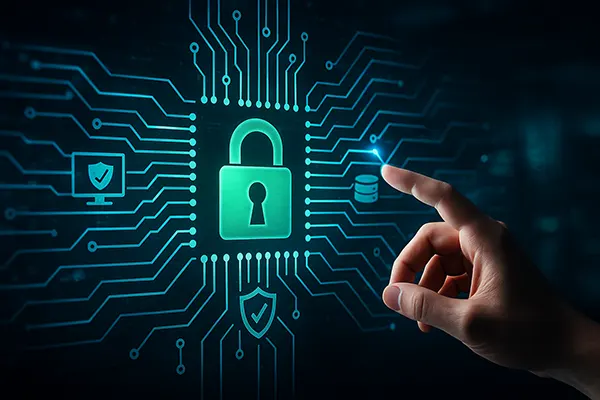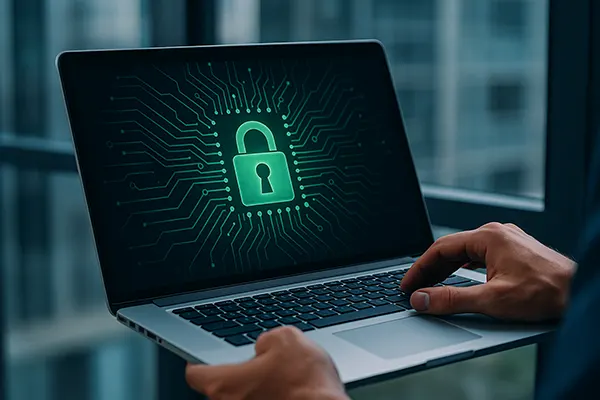
Zero Trust — The New Standard of Corporate Cybersecurity
Zero Trust has become a defining security model for organisations in 2025. It rejects the outdated notion of inherent trust within corporate networks and instead enforces strict identity verification and access control at every step. As cyberattacks grow more complex and distributed workforces become the norm, Zero Trust provides a reliable framework to reduce security risks and protect sensitive data.
Core Principles of Zero Trust
Zero Trust is based on the philosophy of “never trust, always verify.” Every access request must be authenticated and authorised, regardless of the user’s location or device. This model removes implicit trust and ensures that security checks are consistent across all environments.
Identity and Access Management (IAM) forms the backbone of Zero Trust. Techniques such as multi-factor authentication (MFA), single sign-on (SSO), and least-privilege policies ensure only authorised individuals can reach critical resources. These measures significantly reduce the attack surface.
Network microsegmentation complements IAM by dividing infrastructure into isolated zones. If attackers gain entry, they are confined to a single segment, preventing lateral movement and minimising damage.
Challenges in Implementation
Shifting from traditional security to Zero Trust is complex. Legacy systems often lack integration with modern identity controls, requiring investment in new solutions and staff training. This transition demands careful planning and phased deployment.
Another challenge is user friction. Strict access policies may hinder productivity if not designed carefully. Organisations must balance security with seamless user experiences to ensure operational efficiency.
Costs can also be a barrier. Implementing Zero Trust involves expenses for identity tools, network segmentation technologies, and continuous monitoring systems. Yet these costs are often outweighed by the prevention of costly breaches.
Technologies Driving Zero Trust
Cloud Access Security Brokers (CASB) monitor and secure data across cloud services, enforcing corporate policies and preventing data leaks. They give visibility into data flows, which is crucial in hybrid environments.
Endpoint Detection and Response (EDR) provides real-time protection on devices. These tools detect anomalies, isolate threats, and support rapid incident response, which is vital for defending remote and mobile endpoints.
Secure Access Service Edge (SASE) combines security functions like secure web gateways and Zero Trust Network Access (ZTNA) into a unified service. This allows secure and fast access to resources for remote workers worldwide.
Steps for Effective Integration
The first step is a full audit of current systems and access flows. This reveals vulnerabilities and prioritises which assets need Zero Trust protections first. Understanding the digital environment is crucial before applying controls.
Next, organisations must establish centralised IAM systems and enforce MFA across all accounts. This dramatically reduces the risk of credential compromise and unauthorised access.
Finally, adopting a phased rollout helps minimise disruptions. Companies can apply Zero Trust to high-risk areas first, then expand gradually, refining policies based on real-world results.

The Future of Cybersecurity with Zero Trust
Zero Trust is becoming the expected standard for corporate cybersecurity. Regulatory frameworks increasingly demand strong access control and data protection measures, and Zero Trust satisfies these requirements effectively.
Artificial intelligence (AI) enhances Zero Trust systems by analysing behaviour patterns and automating threat detection. Machine learning models can detect insider threats and subtle attacks far earlier than human monitoring alone.
In the future, Zero Trust will be embedded in company culture. Employees will be trained to follow its principles, while executives will prioritise continuous investment in security architecture and data protection measures.
Long-Term Organisational Benefits
Zero Trust dramatically reduces the potential impact of breaches. Even if attackers compromise one segment, they cannot move freely across the network, containing the threat effectively.
It also simplifies compliance with regulations like GDPR, HIPAA, and ISO/IEC 27001. These frameworks align closely with Zero Trust principles such as strict access control and continuous monitoring.
Ultimately, adopting Zero Trust strengthens organisational resilience. Companies can maintain trust with stakeholders, protect sensitive information, and operate securely in an increasingly hostile digital environment.


